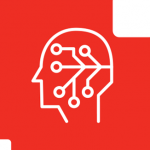Hybrid meetings: Walking the line between onsite and online
As communities enter the ‘new normal’ and develop strategies for economic recovery and how to build back better, questions about business continuity, and ultimately meetings, are coming into sharp focus.
As holding onsite-only meetings remains challenging, the in-betweens will gain more ground. To illustrate with the most recent example, the 43rd regular session of the UN Human Rights Council (UNHRC) has been organised in a hybrid format, combining both in situ and virtual contributions.
While technical practicalities can be resolved relatively easily, translating engagement and interactivity, and conducting effective moderation that is inclusive of both online and onsite participants, will demand further attention. The emerging culture of how we meet will require a new mindset, reflect our new circumstances, and encompass the technical, security, diplomatic, and behavioural aspects of online and hybrid meetings.
Fintech for financial inclusion
Inclusive finance measures, such as access to financial products and services for women, food producers, micro, small and medium enterprises (MSMEs), and improved capacities of domestic banking institutions, are amongst the 169 targets set forward in the 2030 Agenda for Sustainable Development. Much hope is being placed in the development of fintech solutions.
According to a report by McKinsey Global Institute, fintech services, including mobile money (such as mPesa in Kenya and Orange Money in many African countries), as well as digitised salary payments and digital saving accounts, can reach an estimated 1.6 billion unbanked people out of which more than half are women.
Given that over 60% of the adult population in Africa and the Middle East is unbanked, followed by South East and South Asia with 59% and 53% respectively, it should come as no surprise that sub-Saharan Africa, with 468.2 registered accounts, has the largest number of mobile-money users. The lowest number of mobile-money services can be found in Europe and Central Asia, where 39% of the adult population is financially excluded.
That said, digital finance also raises a number of concerns. Many financial online services collect and use personal data. For instance, mobile payment transactions collect ID numbers, purchase histories, and location data which in turn give way to profiling customers and clients. Instead of being inclusive, online services can actually lead to discrimination.
Other issues, such as data privacy, data ownership, and data leakage and loss, are also coming up as topics of concern with the increasing use of fintech.
Past event: Navigating Geneva’s Digital Policy Landscape
On 23 June 2020, the Geneva Internet Platform (GIP) held the online conference Navigating Geneva’s Digital Policy Landscape during which participants were informed about the work on Geneva Digital Policy Atlas which will be presented to the international community in early September. The Atlas will help officials, diplomats and other actors understand which Geneva-based organisations are working on which digital policy issues including health, development, migration and trade.
The digital implementation of SDGs
In order to explore the role of digital technology as an accelerator of sustainable development, we conducted an analysis of the 17 sustainable development goals (SDGs) and their respective targets.
In addition to identifying over 90 ‘digital targets’, i.e., targets that could benefit from digital technologies, we also detected existing examples, mostly from the developing world, where AI, big data, and the Internet are being used to attain the targets in question.
According to our mapping, SDG 3 (Good Health and Well-Being) is the most ‘digitally oriented’ SDG: we identified tech solutions for 8 out of 13 targets, including OpenWHO, an online platform that facilitates capacity building and knowledge sharing on epidemics and pandemics, the use of mobile phones for reducing maternal mortality rates, and data dashboards for reducing the number of deaths and illnesses from hazardous air pollution.
Digital technologies, such as chatbots, that facilitate access to public information and online fraud reporting tools, could help attain more than half of the SDG 16 (Peace and Justice) targets.
Visit DigitalWatch to explore our visuational and see examples of the interplay between digital technology and SDGs.
UN Roadmap for Digital Cooperation: What is in it for sustainable development?
Released on 11 June 2020, the UN Secretary-General’s Roadmap for Digital Cooperation sets out actions on global connectivity, digital public goods, inclusion, capacity-building, human rights, and digital trust and security grounded in sustainable development. It drafts out the way forward for digital cooperation which will be key for delivering on 2030 Agenda. Take a look at just-in-time analysis to learn more about the Roadmap.


 In this issue, we provide a round-up of top news on development, climate action, and food security.
In this issue, we provide a round-up of top news on development, climate action, and food security. We share figures on the 2019 digital health market and forecasts for 2026.
We share figures on the 2019 digital health market and forecasts for 2026.


